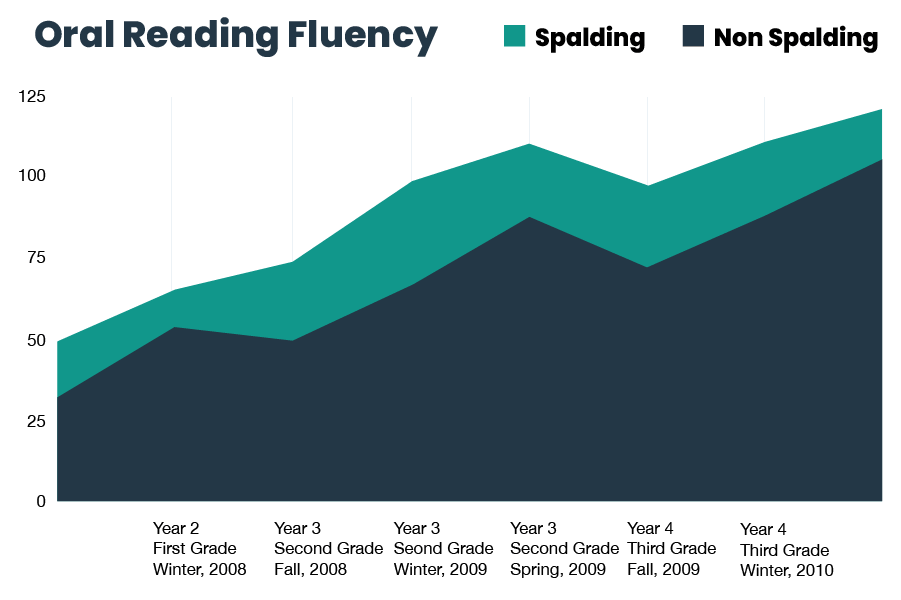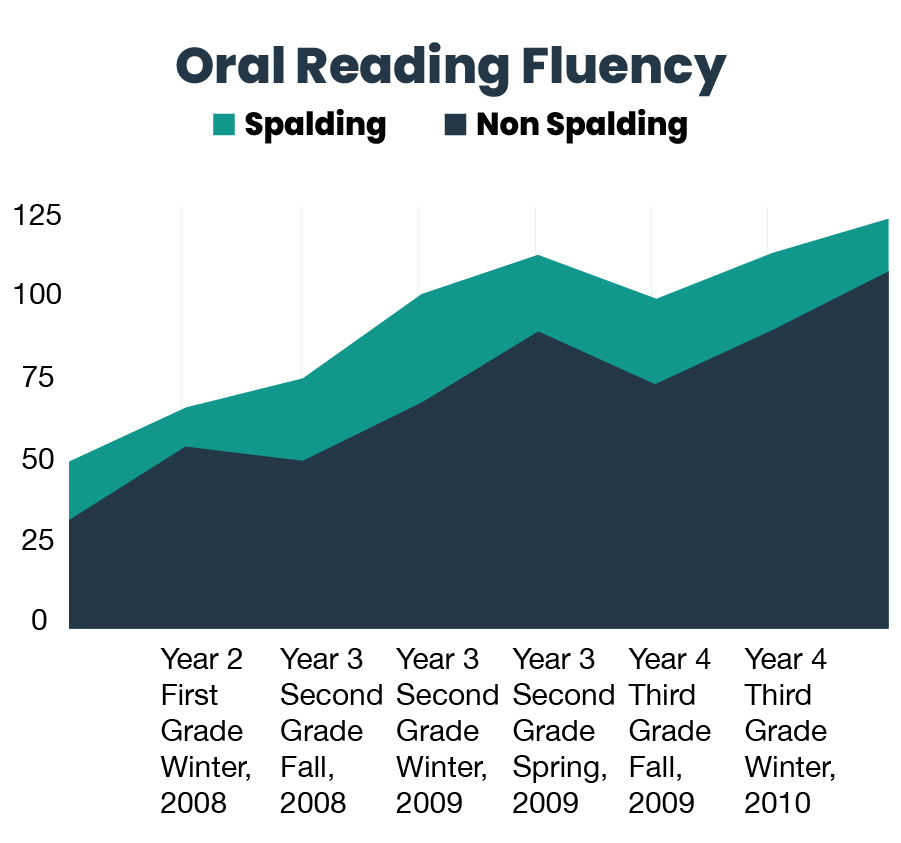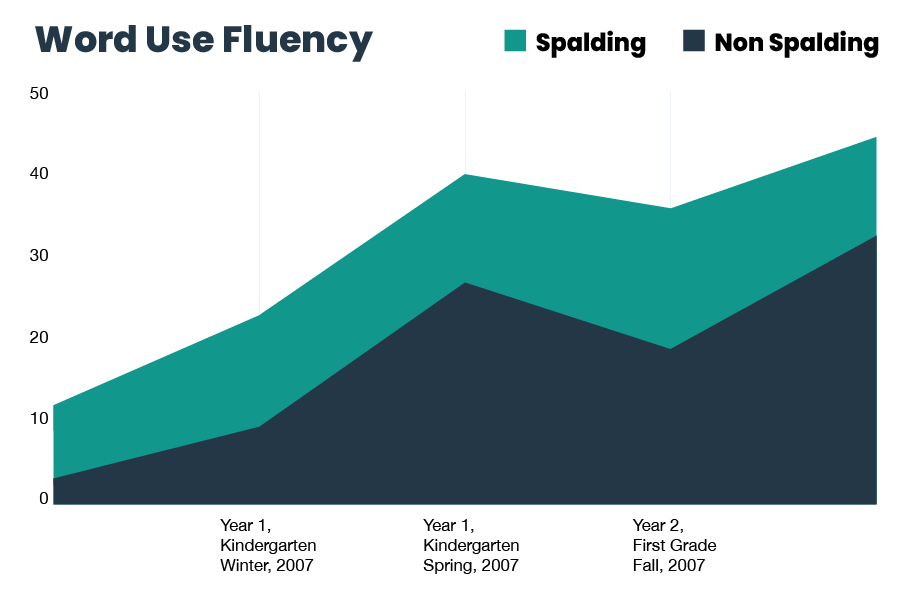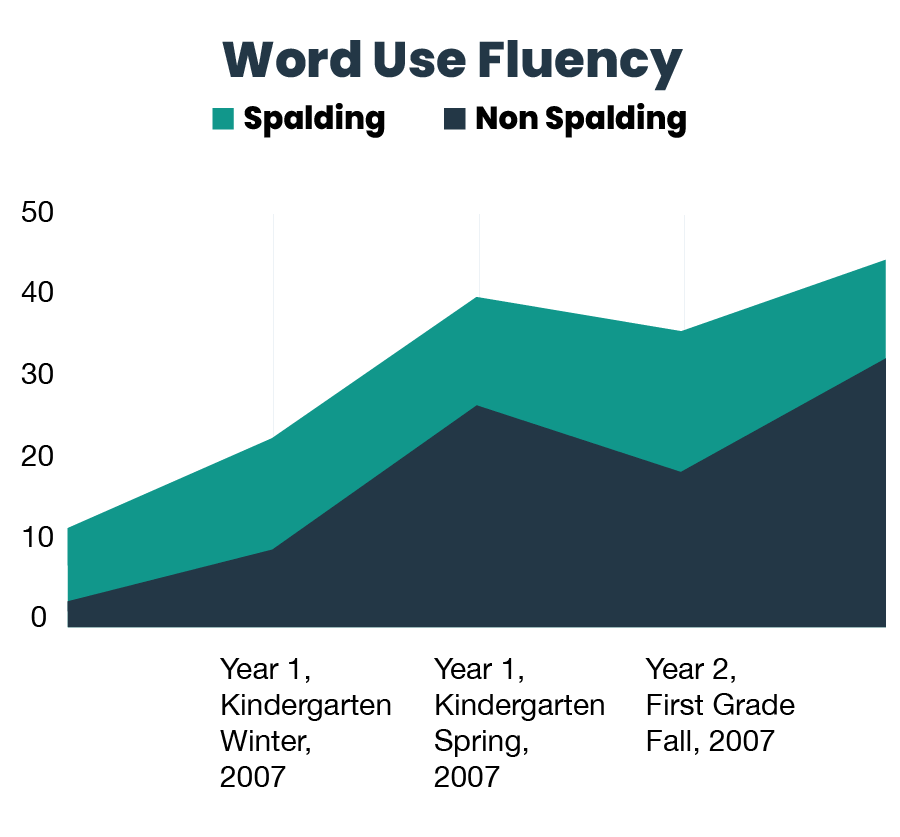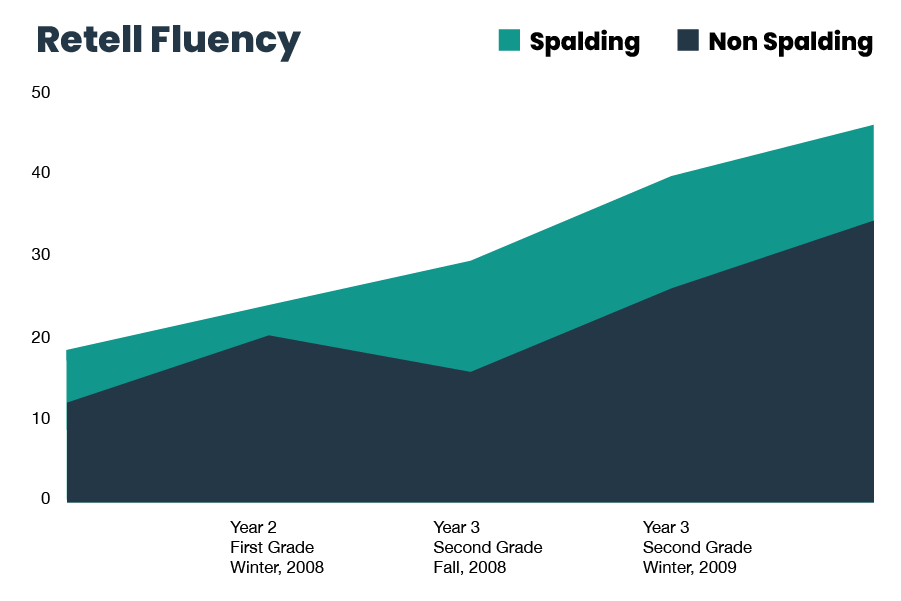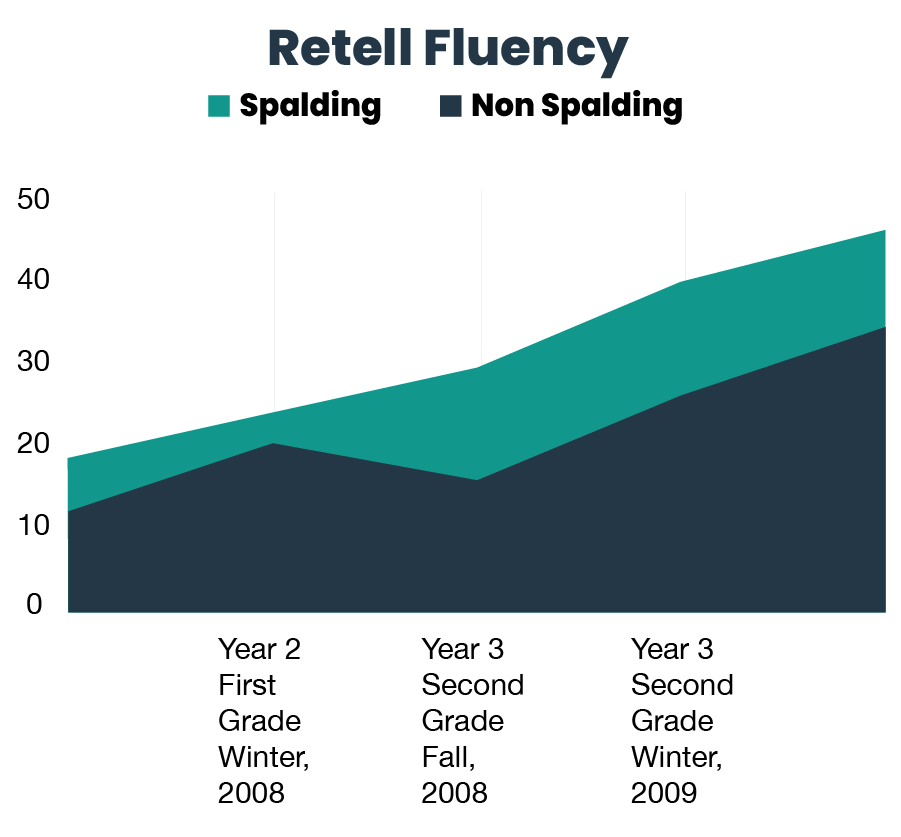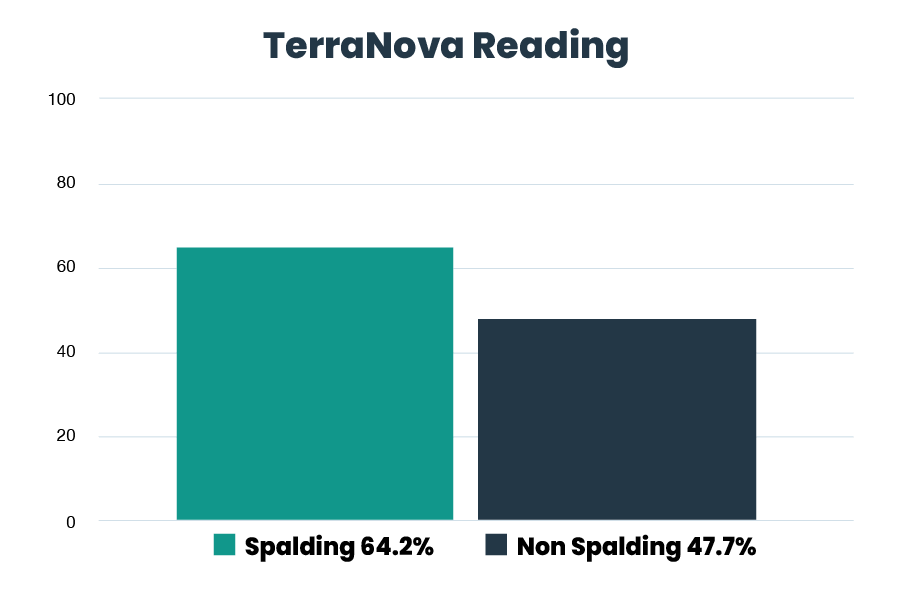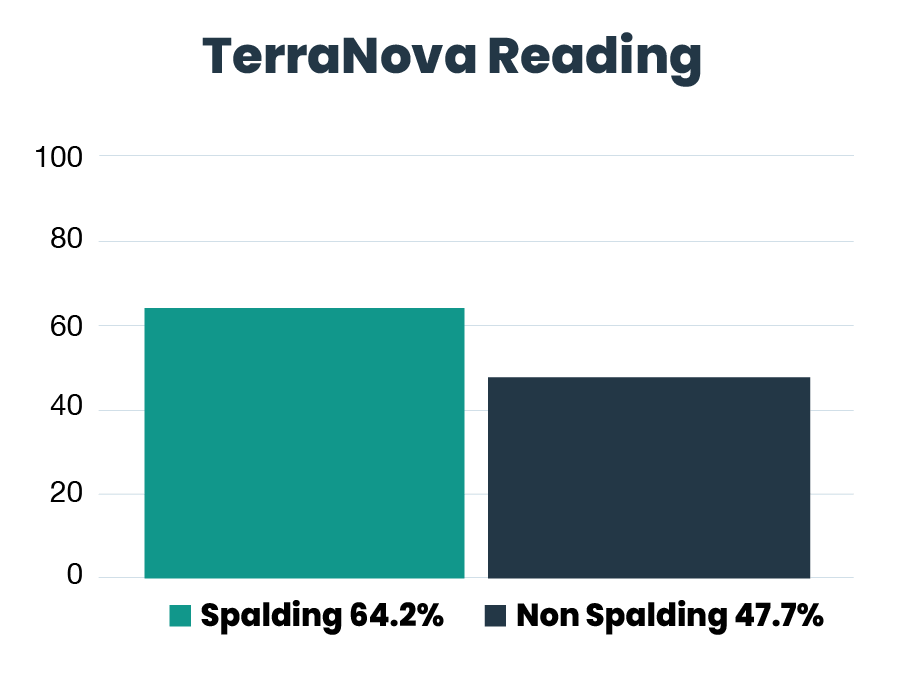Arizona State University Final Study Report
This four-year study strongly suggests that using THE SPALDING METHOD® improves performance in critical literacy skills.
According to the four-year study (from 2006-2007 through 2009-2010) conducted by the Arizona State University, students who used THE SPALDING METHOD® demonstrated higher and statistically significant learning as measured by DIBELS (Dynamic Indicators of Basic Early Literacy Skills).
One group used THE SPALDING METHOD®, while the second group used either Houghton Mifflin or Harcourt. Since both groups used detailed teacher guides evaluated by the Arizona Department of Education for research-based reading components, theoretically, they should have produced similar results. This was not the case.
